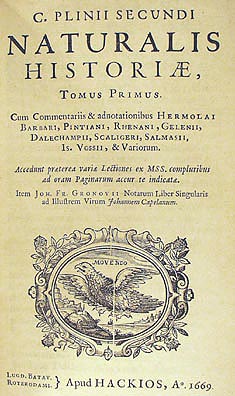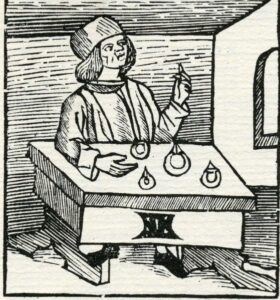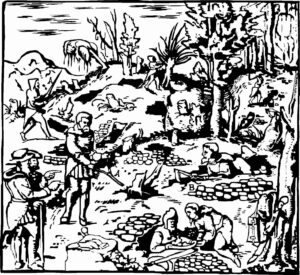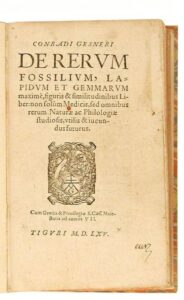from Gems in Myth, Legend and Lore by Bruce G. Knuth
References to gemstones appear in many ancient writings. They may be mentioned as decoration, a means of barter, a symbol of wealth, the source of power and magic or the objects of adoration. In these earliest records, the gem was auxiliary to the primary topic and not a subject in and of itself. It was not until the writings of Aristotle (384-322 B.C.) that the physical world and its constituent parts became worthy topics of study and documentation. Aristotle’s division of philosophy into separate branches— logic, metaphysics, physics, ethics, politics, and art led to the systematic study of nature. The natural world also was divided into parts or elements. These elements were earth, water, air, fire, and ether. Gems could then be classified and described in these terms and their properties recorded. The study of gems and minerals began with the recording of observations, documenting of sources, and the cataloging of legends and folklore. The first writings were attempts to compile all that was known at the time. Along the way, a mix of science and pseudo-science filled the works produced. As the understanding of the natural sciences grew, so did the sciences of mineralogy and gemology. The following is a brief chronology of these milestones in gem literature.
Origins
Theophrastus (ca. 372-287 B.C.), a student of Plato and successor to Aristotle as head of the Peripatetic school of philosophy, is credited with writing the first known treatise dedicated to gems. Of his Peri Lithon (Of Stones) only a fragment of the original work is preserved. This Aristotelian mix of physics and metaphysics is credited as the source for much of the lore passed along in latter works. The first English translation of Peri Lithon by John Hill is superseded by two modern translations, the first of these by E. R. Caley and J. F. C. Richards and the second by D. E. Eichholz.

The Roman author and historian Gaius Plinius Secundus, a.k.a. Pliny the Elder (23-79 A.D.) compiled the Naturalis Historia (Natural History) from a reported two thousand sources. This thirty-seven volume work, published in 77A.D., embraces the domain of natural history in the broadest sense. It includes astronomy, geography and meteorology. Beyond what is today considered natural history, it also includes fine arts, inventions, and human relations. It stands as the chief source from which future historians have obtained informative descriptions of life in the first century.
Much of Pliny’s information on gems was not written from direct observation. His studies were often a retelling from second-hand sources, now lost in antiquity. Many stones are lumped together by color, mining location, or attributes passed on in legends. His recounting of legends and myths, and assumptions drawn from these are the basis of much of the writing which appeared in the Middle Ages. He became the most often quoted writer on the subject, and his information was relied upon and repeated without question in book after book. In the first thirteen centuries of European history, little scientific information was added to the limited knowledge of gems garnered from Pliny’s accounts. However, many later authors embellished the writings and added their own speculations and unwarranted conclusions.
Pliny is credited with his attempts to classify gems according to color and observable external characteristics. This led to the practice of assigning the attributes of one stone to all stones of similar color or appearance. The green stones named smaragdus in Latin are prime examples. Pliny classified most green stones as varieties of emerald. In all, twelve varieties are listed; green sapphire, turquoise, smithsonite, malachite, jasper, and even glass are identifiable by his descriptions. He also is credited with making some astute classifications. It is thought that he was the first to recognize the connection between beryls and emeralds.
Beryls are the same nature as emeralds, or at least very similar.1
Some of the stones grouped by Pliny share little in common. It is obvious that some of his “observations” were gathered through other’s eyes. Errors in translation or reliance on oral tradition may have led to the inclusion of misinformation about stones that Pliny was not able to observe in nature.
Since the original Latin version, over two hundred and fifty editions of his classic have been published in numerous languages. The first complete edition of Natural History was published in Venice in 1469, and the first critical edition was offered by Hardouin in 1685. The most detailed study of Pliny’s gemstone accounts is a work by S. H. Ball.
Christian Lapidaries
Saint Epiphanius (ca. 315-420 A.D.), Bishop of Constantia in Cyprus, wrote the first treatise dealing with the gemstones mentioned in Biblical writings. This work served as a model for the treatment of Biblical gems in future lapidaries. It is also the first reference to the possible composition and significance of the twelve stones in the Breastplate of Aaron. Epiphanius is known to have traveled throughout the Eastern Mediterranean and studied in Egypt and Palestine. Lynn Thorndike writes that these early opinions concerning the stones of Aaron’s Breastplate:
…perhaps gives an excuse and sets the fashion for the Christian medieval Lapidaries.2
Dorothy Wyckoff states in her studies of lapidaries that even though the Church had banned the practice of heathen worship and superstitious practices:
Even devout Christians could not entirely shake off the old belief that precious stones possess some sort of supernatural powers or significance…. this interest was to some extent legitimized by focusing attention on the stones mentioned in the Bible, especially the two (different) lists of the “twelve stones”—those in the breastplate . . . and those in the foundations of the New Jerusalem.3
The entire text of Epiphanius’ Biblical Lapidary was first placed in print as part of De Omne Rerum Fossilium by Conrad Gesner of Zurich in 1565. Noted for the fervor in his writings, Epiphanius had been quoted and referenced by numerous authors centuries prior to this first complete publication.
Isidore, Bishop of Seville (ca.560-636), was the leading clergyman of his day and exerted a great deal of influence over the thought and literature of the Middle Ages. His Etymologiarum sive Originum Libri XX (Etymologies) was an encyclopedic work containing more than one thousand manuscripts dealing with the collected knowledge of the day. The Etymologies was intended to serve as a dictionary rather than an encyclopedia or instructional manual. His descriptions, classifications, and attributes given to many gems made his writings the standard reference for scholars into the twelfth century and beyond. This work is often referred to by later writers who explore the subject of gems and minerals.
The eleventh century Bishop of Rennes is known by a variety of names; Marbod, Marbodei, or Marbodus followed by the names Redonensis or Andecavensis. Commonly referred to as Marbod, this medieval scholar lived from about 1035-1123. His Libellus de lapidibus, a.k.a. Lapidaire en Vers, is considered the most important and influential work of its kind. The chronicler of Marbod, Lynn Thorndike, calls it:
…the classic on the subject of the marvelous properties of stones.4
These poetic works were so popular that more than one hundred and sixty manuscripts were prepared in Latin and several translations were written in the vernaculars of the day.
The text consists of seven hundred and thirty-four hexameters concerning sixty kinds of stones. It is prefaced by twenty-three lines describing the source of information as Damigeron or Evax, king of Arabs. F. D. Adams states that it is:
…the earliest lapidary of the Middles Ages, and also the one which is quoted most widely.5
The first published text appeared in Vienna in 1511.
The entire work may be divided into five sections according to Adams. The first deals with twenty-six mythical stones and is so obscure that little connection can be made with known minerals. The second section describes stones of animal or organic origin. The third category includes four stones which may be distinguished as separate recognizable minerals. Descriptions of fourteen quartz varieties characterize the fourth section, and fifteen other recognizable minerals make up the final listing. This last grouping contains little in the way of physical characteristics, but is filled with legend and lore of these gems. Marbod attributes his knowledge of the magical properties of stones to Evax.
Despite its standing as a primary reference, Marbod’s writings rely on information from other earlier writers. Little material is included that had not appeared in the works by Solinus (third century Roman grammarian and author of geographic compilations) and Isidore. The geographic information listed by Solinus is attributed to his studies of Pliny.
Albertus Magnus (1193-1280) Bishop of Ratisbon, teacher and lecturer is noted for his application of science and the scientific method to theology. He served as a teacher at the University of Paris and counted Thomas Aquinas as one of his students. Magnus is known as one of the founders of the school of Scholasticism and believer in reason as a supplement to faith. He made Aristotelian thought intelligible to Latin scholars. His De Mineralibus is characterized by Dorothy Wyckoff as:
…an impressive attempt to organize the science of mineralogy.6
The primary criticism has been that it still included a great deal of superstition and speculation. The first printed version appeared in Padua in 1476. Adams states:
(De Mineralibus is) one of the best and most comprehensive of the western medieval lapidaries . . . enlarges at length on their mystical and wonder-working powers and virtues.7
This lapidary has been lauded for its attempt to explain the formation of minerals and gemstones, the causes of their color, and other physical properties.

The great writer and thinker of the thirteenth century, Alfonso X the Learned (1221-1284 A.D.), King of Castile and Leon, composed the first major work on astrology and gemstones. His principle object was to demonstrate the connections of gemstones and other minerals to celestial bodies. The astrological tables he devised were based on Arabic translations and were calculated for the Toledo Meridian. These tables, however, became the standard for all of Europe for centuries. The text was extensively illuminated and illustrated.
Alfonso classed gems by color and placed each under one of the twelve zodiac signs. Remarks on properties, uses, and medicinal virtues for each stone were included with attention paid to how these virtues are influenced by the planets and stars. His writings serve as a model for the connections between gems and astrological signs to the present day.
Introduction of the Scientific Method
Camillus Leonardus, physician of Pesaro, Italy, gathered information from previously published works, but used scientific methods to distinguish gems. His findings were published under the title Speculum Lapidum in 1502 and republished in England under the title Mirror of Stones in 1750. Leonardus treated physical properties, hardness, specific gravity, compactness, color, form, and geographic origins more thoroughly than previous works. He held that the virtues, medicinal use, and properties of gems was imparted or enhanced by having their surfaces engraved with suitable symbols and signs. He further stated that some powers attributed to gems existed only by such engraving.
The Science of Mineralogy

Georgius Agricola (1494-1555) has been called the father of mineralogy. His De Natura Fossilium (1546) is considered one of the most important mineralogical/gemological works of all time. Unlike his predecessors, he provided comments of considerable accuracy on the nature, properties, and treatment of gemstones. The descriptions indicate a first-hand knowledge of many of the gems listed. It is evident that he relied on the writings of Pliny to describe stones of which he had no personal knowledge.
He also:
…asserted that minerals and certain rocks originated from petrified juices.8
He makes reference in his text to scratch tests for hardness and includes descriptions of physical characteristics and characteristic flaws of many gems. These physical descriptions have proved to be quite precise, even under today’s standards.

De Omne Rerum Fossilium (1565) is a compilation by Conrad Gesner (1516-1565) of eight works on gemstones. It contains Epiphanius’s treatise on Biblical stones, as well as Fanciscus Rueus’ De Gemmis Aliquot, a general treatise on stones published in 1547. It also contains an original writing by Gesner, Lapidum et Gemmarum, which classified stones by their external characteristics into fifteen categories. Its publication marked the first time a purely mineralogical work was illustrated with woodcuts of minerals, crystals, fossils, and cut gems.
The work perpetuates the classification and naming of stones by color and the tradition of differentiating within classes by place names. In his system true emerald is called “Occidental emerald”, tourmaline is called “Brazilian emerald”, green sapphire is “Oriental emerald”, and yellow or orange sapphires are called “Oriental topaz”. The tradition of using these misnomers has continued in the jewelry trade to the present day.
Gemmarum et Lapidum Historia (1609) by Anselmus Boëtius de Boodt (ca. 1550-1632) is one of the landmarks in lapidaries. It deals with gems from the New World and compares them to those available in Europe and Asia. De Boodt lists five degrees of hardness in stones and speculates concerning the existence of a distinct atomic structure in minerals. His treatise gathers together information which demonstrates the best scientific knowledge of the day. He cites material he borrowed from other writers and adds new observations. His position as physician to the royal court of Rudolph II of Prague gave him the opportunity to study numerous gems first-hand. He also expresses skepticism over the mystical and medicinal virtues of gems and minerals. His writings demonstrate advances in the science of gemology and show a greater understanding than writers who preceded him. Adams calls de Boodt’s writings:
…in many respects the most important lapidary of the seventeenth century.9
Musaeum Metallicum in Libros IV Distributum by Ulyssis Aldrovandi (1522-1605) was published posthumously in 1648. It is an illustrated text on the mineral kingdom. Little or no new information is included, but the term geoligia of geology appears for the first time in the context it is used today. With this work, the field of gemology split into two distinct disciplines; the science of mineralogy and the romance and lore of gemstones.
The gemological historian, F. D. Adams, closed his chapter on medieval mineralogy with a discussion of Aldrovandi’s work by stating:
Medieval mineralogy in fact is not a science . . . . not a solid tower of learning . . . but a fairy castle, the insubstantial fabric of a dream, often quaint and even beautiful, but destined to crumble away because it had no foundation in reality . . . it was now to be succeeded by a true science of mineralogy built upon the basis of close observation and diligent study of the materials of the earth’s crust.10
Nearly three centuries of gemology have followed this tradition.
The first major work published in English is by Thomas Nicols and carries the curious title A Lapidary: or, the History of Pretious Stones, with Cautions for the Undeceiving of All Those That Deal with Pretious Stones(1652). Nicols describes in detail gems and their imitations, glass replicas, and the use of foil as a backing agent. The essays list supernatural characteristics of gems and gives the causes and methods of detection for these phenomena. Nicols cited de Boodt as a primary source, but his research did add some new information.
Robert Boyle (1627-1691), English philosopher, chemist, and physicist, wrote An Essay About the Origine and Virtues of Gems in 1672. It was considered the most scientific work possible in its time. It covers the formation of minerals and their crystals. Important new work was included on crystal formation and crystallization from solutions as reported by direct observation. Minor remarks were made on the impossibility of the medicinal uses of gems due to their insolubility. Boyle doubted the ability of gems to have a remedial affect, but admitted that some soluble minerals may be of benefit. He also mentioned the use of hydrostatic weighing (specific gravity) to ascertain a gem’s density and the measuring of refractive properties as means of separation and identification.
London physician Dr. Robert Pitt continued observations on the medicinal value of gems in his 1703 book, The Craft and Frauds of Physick Expos’d. This second work on the theme of medication was:
…written to show the small cost of the really useful drugs, the worthlessness of some expensive ones, and the folly of taking too much physic. The book gives a clear exposition of the therapeutics of that day, and is full of shrewd observation.11
Pitt reiterated the insolubility of gems and the fact that this would make it impossible for them to affect the body. He gave as proof the example of stones ingested by birds. He observed that they are passed without any change in color or shape.
Modern Gemology
The early eighteenth century saw the fields of mineralogy and geology adopted as pure sciences. The introduction of better record-keeping and specialized tools led to more accurate and reliable information. Writings in these areas concentrated on careful observation, chemical and physical experimentation, and the documentation of the results. From the eighteenth to the twentieth century a vast amount of technical data was gathered.
Gemology, however, relied upon the retail jewelry industry for any research or study. Since legend, lore, and the romance of gems was perceived to be “good for business,” research was in this specialized area. Published information did little to expand on limited knowledge which had existed for centuries.
The research and writings of Dr. George Frederick Kunz in the late nineteenth and early twentieth century revived interest in the study of gems. His work cataloging the gems of North America, as consultant to Tiffany’s, and as founder and curator of the mineral collections at the American Museum of Natural History, brought gemology to a new level. His technical writings gained little public notice, but his compilations of ancient pseudoscience—The Curious Lore of Precious Stones (1913) and The Magic of Jewels and Charms (1915)—have remained popular works.
Robert M. Shipley’s founding of the Gemological Institute of America in 1931 and the American Gem Society in 1934 brought professionalism to gemology and the jewelry industry. These educational and trade organizations continue to bring standardized and reliable information to jewelers and consumers. The GIA quarterly publication, Gems and Gemology, is a primary source of the most current research on gems and their characteristics.
Over two thousand years of speculation, research, and writings have been collected by these scholars. The sciences of gemology and mineralogy have grown from infancy and become more and more sophisticated. Physics, chemistry, biology, and medicine have all experienced great changes over two millennia. The study of gems and their properties has contributed to all of these sciences.
The approach of the third millennium has seen a renewed interest in the powers and virtues of gems. The use of gems and minerals as healing agents, personal protectors, and conduits to other realms of consciousness has gained great popularity. Mysticism and metaphysics remain strong influences in the lives of many, but misinformation and confusion abounds. Modern authorities profess great insights regarding gems and their uses, but a great deal of the information being disseminated does not recognize the knowledge of the past and the foundations of gem study. As one explores the collected wisdom of these great men, it is evident that there is much yet to be understood.
Notes
- GIA Colored Stones Course lesson 29 (Santa Monica, California: Gemological Institute of America 1980) p.2↵
- John Sinkankas, Emerald and Other Beryls (Prescott, Arizona: Geoscience Press 1989) p.24.↵
- Sinkankas, p. 24.↵
- Lynn Thorndike, A History of the Magical Experimental Sciences vol. I (New York: Columbia Press, 1923) p.174.↵
- Sinkankas, p. 26.↵
- Dorothy Wyckoff, Albertus Magnus Book of Minerals (Oxford: Clarendon Press, 1967) p.309.↵
- F. D. Adams, The Birth and Development of the Geological Sciences (Baltimore: Williams & Wilkins, 1938) p.309.↵
- Joseph R. Strayer, editor, Dictionary of the Middle Ages vol. I (American Council of Learned Societies, 1982) p.36.↵
- Adams, p.420.↵
- Adams, p.424.↵
- Sinkankas, p.46.↵